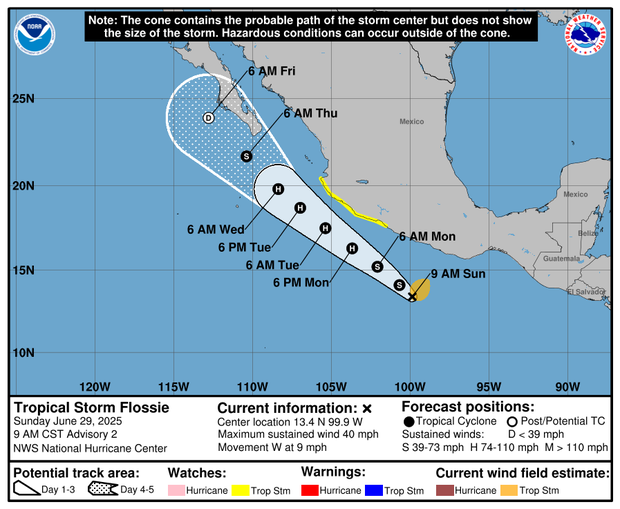Flossie after Barry became a tropical depression

two Tropical storm Founded on Sunday on two Mexican coasts, they are expected to be immersed in the region for a few days.
Barry, the second of this year called “Storm” Atlantic hurricane seasonBy Sunday night, it became a tropical depression, when it started landing shortly afterwards at 11 p.m. ET. According to the Miami National Hurricane Center, it has brought landfalls on Mexico’s east coast across Mexico’s east coast.
NOAA via AP
Barry quickly weakened with the migration inland. Forecasters who issued a tropical storm warning said the storm could be three to six inches from Monday to Monday, with the maximum isolation of the entire Veracruz, San Luis Potosi and Tamaulipas.
Meanwhile, on Mexico’s southwestern coast, tropical storm Flosi was founded on Sunday and strengthened the hurricane on Monday night. As of 10pm on Monday, it was about 175 miles south of Manzanillo, Mexico, moving westward at 10 mph with a maximum sustained wind of 75 mph.
Forecasters said Flosi is expected to remain in open water west of Mexico.
NOAA
Early next week, the storm may dump three to six inches of rain in Oaxaca, Guerrero, Micho Mountain, Colima and Jalisco Island.
The Pacific hurricane season begins on May 15, while the Atlantic hurricane season is from June 1 to November 30, with peak activity usually occurring between mid-August and mid-October.
NOAA officials predict There are 60% chances of “normal” during the Atlantic hurricane season, with 13 to 19 named storms. Forecasters said six to ten of them are expected to strengthen hurricanes, three to five likely to be major hurricanes.


